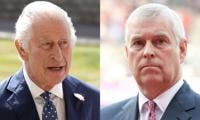Failure on all fronts
The US will not engage the Taliban in peace talks; instead, it will finish what it has to finish. That’s how Donald Trump reacted to the series of bomb blasts that rocked Kabul last month. Will the unpredictable American president turn out to be as good as his word? This is anybody’s guess.
In Afghanistan, the US has fallen between two stools. This has led many to believe that the country has no coherent Afghan strategy. Trump inherited the Afghan problem from his predecessor Barack Obama – who, in turn, had inherited it from the man whom he succeeded in the White House, George Bush.
An exponent of the doctrine of pre-emption, Bush had invaded Afghanistan to bring down the Taliban regime for supporting and sheltering the masterminds of the 9/11 attack. It was on that score that Senator Obama, who opposed the Iraq war, had supported the Afghan invasion. A few years later, while running for the White House, Obama pledged to turn things around in Afghanistan.
When Obama assumed office in January 2009, around 50,000 American troops were stationed in Afghanistan. He readily deployed another 17,000. A few months later, the strength of the troops climbed to 100,000. The Obama administration’s Afghan strategy then had two components: a strong US military presence in Afghanistan to counter militancy and the reconstruction of the war-torn country – or nation-building as they would call it. The strategy implied full faith in American capabilities to secure and rebuild Afghanistan.
“To disrupt, dismantle and defeat Al-Qaeda and its affiliates” was described by Obama’s 2010 National Security Strategy as a key strategic objective of the US. Afghanistan and Pakistan were collectively termed as the epicentres of terrorism for the strong presence of Al-Qaeda. If the Americans withdrew from Afghanistan, the country might be run over by the cataclysmic organisation.
It is important to note that Washington’s principal adversary in Afghanistan was Al-Qaeda and not the Taliban. Although they had much in common, Al-Qaeda and the Taliban were not one and the same. Whereas the Taliban were a local outfit, Al-Qaeda was an international organisation. The 9/11 attack was masterminded by Al-Qaeda, not by the Taliban. If the Taliban regime had handed over Osama bin Laden to the US, Afghanistan might not have been invaded.
The Taliban never posed a direct threat to US security and, therefore, were not a thorn on Washington’s side, the way Al-Qaeda was. While the Taliban did attack US military personnel, they did it because these personnel were stationed in Afghanistan. In fact, Washington made a distinction between the ‘bad’ Taliban (who were not prepared to part ways with Al-Qaeda) and the ‘good’ Taliban (who could be persuaded to do so). It was with a view to segregate the two assumed categories of the Taliban or, to put it diplomatically, to promote peace and reconciliation among Afghan factions that the quadrilateral peace process, which involved Pakistan, Afghanistan, China and the US, was launched. As the subsequent events bear out, this distinction was a madcap, which has proved enormously costly.
Let’s get back to the Obama years. The former US president gradually began to realise that the road to Afghan reconstruction was strewn with insurmountable difficulties. So, he decided to set it aside as a policy goal. Preventing Al-Qaeda from ruling the roost in Afghanistan was the only goal worth pursuing. The May 2011 killing of Osama bin Laden dampened US interest in Afghanistan. During the following year, while on a visit to Afghanistan, Obama stated: “The goal I set, to defeat Al-Qaeda and deny it a chance to rebuild, is now within our reach”. Ridding Afghanistan of the Taliban’s influence was not Washington’s priority. The American combat troops were to be pulled out from the country by the end of 2014. After this point, Afghanistan’s security would become an internal concern.
By the time American troops withdrew from Afghanistan, close to the end of Obama’s second and last term, Al-Qaeda might have been dismantled. But this did not mean that peace was in sight in the troubled country. The Taliban were on the ascendency and the IS, another cataclysmic international organisation that was on the retreat in Iraq and Syria, was spreading its wings.
And then came Donald Trump. While running for the presidential office, he had made no bones about his opposition to America’s costly involvement in foreign wars. Afghanistan presented the spectacle of America’s longest, and arguably the costliest, foreign war. So, by his logic, the new US president should have ensured that his country pulls out of Afghanistan. However, in his Afghan strategy unveiled in August 2017, Trump made a flip-flop on Afghanistan and announced his plans to shore up his country’s military presence in the country.
Trump’s about-face hardly came as a surprise. The Afghan Army has proved to be unequal to the task of holding itself against the growing militant onslaught. The last two years have seen more blood-spitting in the country than the preceding years. The three deadly bomb blasts carried out in the high-security zones of Kabul in January this year should leave no one in doubt about what’s in store for the country in the coming months.
Trump’s Afghan strategy implies a shift from the ex ante or time-based approach of the Obama administration toward an ex post or result-based approach. The intended result has been to force the Taliban to agree to a political settlement. Americans have been confident that the new strategy will bear fruit. Before the recent carnage in Afghanistan, a US envoy to the UN had claimed that their strategy was pushing the militants closer towards holding talks. Is this the case?
What is Washington’s desired outcome in Afghanistan? Does it want to eliminate militancy so that the country doesn’t become a safe haven for another international Islamic militant organisation? Or is it content with creating a semblance of peace and order in Afghanistan so that it can leave the country with its head held high.
The two goals are markedly different. Achieving the former entails a far more long-term commitment on the part of the US in terms of both men and money than the latter. Is the US willing to undertake such a commitment? Afghanistan had a semblance of peace and order when the Taliban called the shots in Kabul (1996-2001). Is Washington prepared for peace at this cost?
The Taliban are bent upon re-imposing their brand of Islamic rule – as they had done earlier – which precludes any dissent or opposition. Even if they are interested in peace, they want to negotiate from a position of strength. Meanwhile, Washington and Kabul are keen on making the militants negotiate from a position of weakness. Not surprisingly, the Afghan peace process is heading nowhere.
Pakistan had also extended an olive branch to the militants on its territory. But every peace overture from the government served as a stimulant to increased militancy until it was decided that the militants will be tackled head-on. Of course, the militants have a far more intrusive presence in Afghanistan than they have ever had in Pakistan. This has made it more difficult to quell militancy on that side of the border. But it is doubtful whether the Afghan Taliban are ready to strike a peace deal that is not on their terms.
After its security concerns, Afghanistan’s two perennial problems have been rampant corruption and an extremely feeble economy. The US has not effectively addressed these challenges. On the economic front, Washington’s major concern has been to ensure that Indian exports get overland access to Afghanistan through Pakistan – a move that will benefit Indians rather than Afghans and ratchet-up New Delhi’s influence on Kabul. With the economy in disarray, Afghanistan remains totally dependent on foreign aid.
The writer is a freelance
contributor.
Email: hussainhzaidi@gmail.com
-
 Cancer Treatment Breakthrough: ‘Nanodots’ Kill Tumours, Sparing Healthy Cells
Cancer Treatment Breakthrough: ‘Nanodots’ Kill Tumours, Sparing Healthy Cells -
 King Charles 'gently Backtracking' On Strict Action Against Andrew
King Charles 'gently Backtracking' On Strict Action Against Andrew -
 YouTube Beats Netflix In Viewership, Here’s Why
YouTube Beats Netflix In Viewership, Here’s Why -
 Prince Albert Of Monaco Spread Christmas Cheer With First Look Into Decked Out Royal Palace
Prince Albert Of Monaco Spread Christmas Cheer With First Look Into Decked Out Royal Palace -
 Princess Beatrice's Decision Could Leave King Charles Disappointed This Christmas
Princess Beatrice's Decision Could Leave King Charles Disappointed This Christmas -
 FPL Key Points To Survive The Christmas Period; Here’s What You Need To Know
FPL Key Points To Survive The Christmas Period; Here’s What You Need To Know -
 SpaceX To End 2025 With Record 165th Launch: How To Watch COSMO-SkyMed Mission Live
SpaceX To End 2025 With Record 165th Launch: How To Watch COSMO-SkyMed Mission Live -
 Sarah Ferguson Considers Unique Surgical Approach To Seeking Forgiveness For Epstein Fiasco
Sarah Ferguson Considers Unique Surgical Approach To Seeking Forgiveness For Epstein Fiasco -
 Prince Harry, Meghan Markle Face Fresh Scrutiny Over Christmas Family Photo
Prince Harry, Meghan Markle Face Fresh Scrutiny Over Christmas Family Photo -
 Watch: Kate Middleton Promises An Extra Special Something For Together At Christmas
Watch: Kate Middleton Promises An Extra Special Something For Together At Christmas -
 Kim Kardashian Goes Incognito On Holiday Ski Trip, Fans Can’t Recognize Her
Kim Kardashian Goes Incognito On Holiday Ski Trip, Fans Can’t Recognize Her -
 King Charles Gives A History Lesson To Royal Fans Ahead Of Christmas Broadcast
King Charles Gives A History Lesson To Royal Fans Ahead Of Christmas Broadcast -
 How King Charles Is Reacting To Abdication Rumours, Prince William's Succession Talks?
How King Charles Is Reacting To Abdication Rumours, Prince William's Succession Talks? -
 Space Race Intensifies As Russia Plans Lunar Nuclear Power Plant By 2036
Space Race Intensifies As Russia Plans Lunar Nuclear Power Plant By 2036 -
 Italy Orders Meta To Suspend WhatsApp Terms Prohibiting Rival AI Chatbots
Italy Orders Meta To Suspend WhatsApp Terms Prohibiting Rival AI Chatbots -
 Serena Williams Surprises Sister With Most Expensive Wedding Gift
Serena Williams Surprises Sister With Most Expensive Wedding Gift



